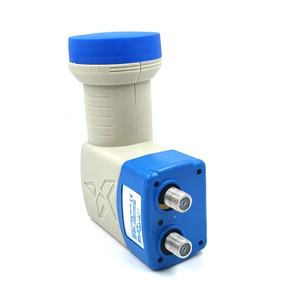
RFTYT Professional Custom 5W Coaxial Attenuator Frequency Range DC~1.5GHz Selling Coaxial Fixed Attenuator





















The C Band LNB (Low Noise Block downconverter) is a critical component in satellite signal reception. This device is designed to receive microwave signals from C-band satellites, convert them to lower frequencies, and then send them to satellite receivers. The C Band spectrum, typically ranging from 3.4 to 4.2 GHz, is known for its resilience to rain fade and its widespread use in satellite communication.
There are various types of C Band LNBs available, each tailored for different satellite reception scenarios. The construction materials of these LNBs include durable metals like aluminum, as well as sturdy plastics and ABS materials, ensuring longevity and performance in diverse environmental conditions. The choice of material impacts the LNB's ability to withstand weather elements and its overall signal reception quality.
When selecting a C Band LNB, key features to consider include the noise figure and stability. Low noise figures are crucial for minimizing signal degradation, while stability ensures consistent performance. These features are paramount in maintaining signal integrity for applications such as satellite TV reception and radio broadcasting.
The application of C Band LNBs extends across various sectors, including commercial satellite TV reception, radio and TV broadcasting equipment, and other radio & TV accessories. Their ability to capture satellite signals makes them indispensable in the telecommunications industry, especially for receiving international broadcasts and data communications.
The advantages of using C Band LNBs are numerous. They are engineered to provide a reliable connection with low noise amplification, ensuring clear signal reception. Their robust construction allows for installation in diverse climates, making them suitable for global use. Additionally, the variety in color and design offers compatibility with different satellite dish setups, without compromising on functionality.
Choosing the right C Band LNB requires consideration of the specific requirements of your satellite system. Factors such as local climate, satellite type, and the desired signal quality play a significant role in the selection process. It is important to assess the specifications of each LNB to ensure it meets the needs of your satellite reception without overpromising on capabilities.